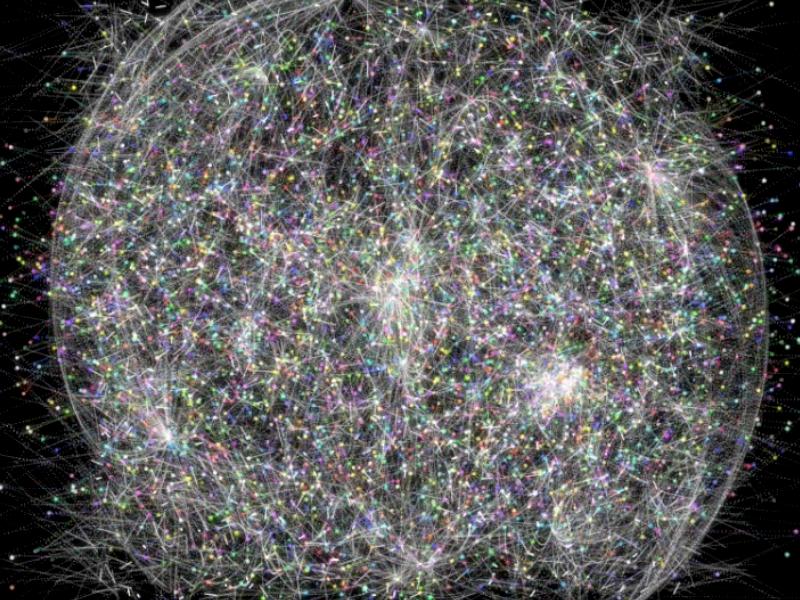We've glimpsed the future. It looks like this.

Just like the legendary astronomer Nicolaus Copernicus, we have all grown up in an era that has been subject to a dominant model.
For Copernicus, it was the idea that the Earth was at the centre of the universe, so it related to the physical world and beyond.
For us, it is manmade but has seemingly acquired ‘natural’ status.
Because, throughout our lives, we have grown used to consuming content that is created and delivered via a mass media model of communication.
We have grown used to the conventions and apparent commonplaceness of myriad forms of media – television, radio, cinema, newspapers, telemarketing, DRtv, video, CD, DVD, BluRay, game consoles, billboards, mailers, e-mail, the web – that have become fixtures in our personal and professional communication landscape.
At its simplest, the mass media model is about transmission: a message is encoded, transmitted via media, and received and decoded by a recipient.
And its pervasive grip means that, in our working lives, we all adopt an approach to product and communications design that is entirely geared to satisfying the rigours of the mass media model.
So, in work, we pursue a predictable process which presumes that we identify the needs and wants of a population segment , create a product that apparently meets the demands or needs of that audience, package up a message for a particular audience, transmit the news via a single or blend of media, in order to effect a response from our intended audience.
This lore of the mass media model has spawned an entire industry and culture that is interdependent.
Newspapers, radio stations, television channels, call centres, websites, market researchers, media planners, advertising agencies, event and hospitality agencies, sponsorship agencies and public relations consultant.
Towards the end of the twentieth century the media and its associated creative industry achieved such command of the media landscape, that they pursued the self-fulfilling state of perfection that is ‘integration’
And, by integration, we all meant that the more tightly knit the design and execution of brand presentation and experience, the more effective the impact of communication.
Within businesses, ‘brand’ was aspirational; prescribing a perfect state of coherent continuity in terms of what customer experience of the brand ought to be.
So marketers talked about creative platforms that would satisfy the brand prescription.
But strategically, it was inside-out.
And it certainly wasn’t communication.
Because the mass media model was principally all about push. It was all about publishing and broadcasting. It was all about talking and telling. It was all about spinning and packaging; presenting a version of the world to suit commercial purposes.
But it worked.
And it worked because accessibility to media in the mass media model was costly and so media ownership was concentrated.
It meant that the media and the creative village that grew up around media channels had total command of the space.
So what happens when you tip media ownership on its head?
What happens when the media itself is distintermediated?
What happens when the cost of publishing is zero, and where the ability to gather a population of followers or subscribers is similarly priced?
What happens when consumers are able to pick and choose the content they consume, and not the brands or media owners?
What happens when individual opinion has the power to make or break reputations?
What happens when ideas can spread more rapidly than was ever possible via mediated content distribution?
And what happens if you are leading a creative agency whose clients have valuable reputations to protect but the means of doing so is disintegrating around you?
The visualisation of the communications universe in a distintermediated world by Bond and Coyne Associates at the start of this post has caused us to draw the following conclusions about the future shape of communications:
By 2012
- Only three communications disciplines will matter: live events, interaction design and conversation
- Momentum behind ‘storytelling’ will gather, ousting traditional ‘campaign-led’ push promotional marketing
- Sustainable reputations will be built on the quality of interaction with a product or service; conversation about interaction will drive new adopters of your product or service
- As they become micro-media channels, ‘other people’ will become at least as influential as traditional media commentators
- Debranding will gain popularity as brands seek to create characteristic brand avatars – a means of creating a signature brand interaction akin to human personality traits both online and offline
So, from a brand communications perspective, here are the five insights that are worth considering:
- This is a brand communications environment of which you have no prior experience and – no matter what they say – nor does anyone else.
- Your brand’s sustainability depends on the permission and goodwill of its stakeholders – it’s not your brand anymore.
- This is a be-good not a do-good world. You have no choice about being transparent; other people will see to that.
- To build brand congregations, you will need to engage populations with a common interest in your product or service and let them improve it with you.
- Congregational conversation will become the preeminent means of spreading ideas.
We’ll keep you posted on our thoughts and observations of the challenging changing world.
